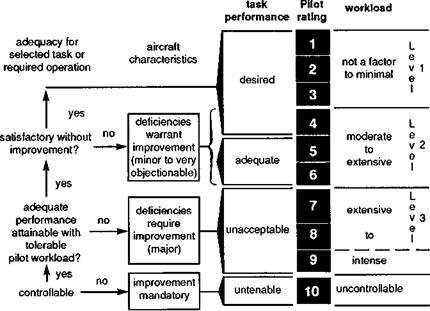Flying Qualities
In this book we loosely divide flying qualities into two categories – handling qualities, reflecting the aircraft’s behaviour in response to pilot controls, and ride qualities, reflecting the response to external disturbances. Agreement on definitions is not widespread and we shall return to some of the debating points later in Chapter 6. A most useful definition of handling qualities has been provided by Cooper and Harper (Ref 2.30) as ‘those qualities or characteristics of an aircraft that govern the ease and precision with which a pilot is able to perform the tasks required in support of an aircraft role’. We shall expand on this definition later, but as a starting point it has stood the test of time and is in widespread use today. It is worth elaborating on the key words in this definition. Quantifying an aircraft’s characteristics or its internal attributes, while complex and selective, can be achieved on a rational and systematic basis; after all, an aircraft’s response is largely predictable and repeatable. Defining a useful task or mission is also relatively straightforward, although we have to be very careful to recognize the importance of the task performance levels required. Quantifying the pilot’s abilities is considerably more difficult and elusive. To this end, the Cooper-Harper pilot subjective rating scale (Ref. 2.30) was introduced and has now achieved almost universal acceptance as a measure of handling qualities.
|
Fig. 2.35 The Cooper – Harper handling qualities rating scale – summarized form |












